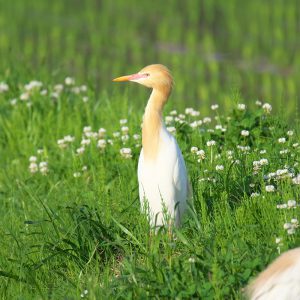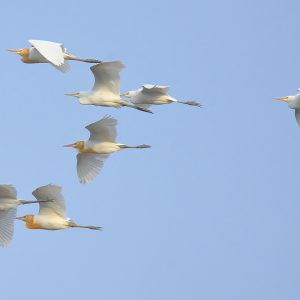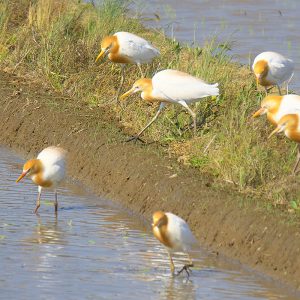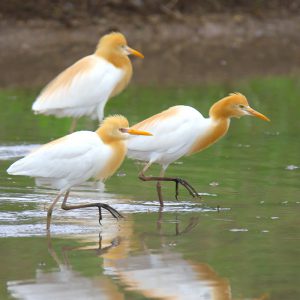むなかたが集まる
電子データベース
電子データベース
アマサギ
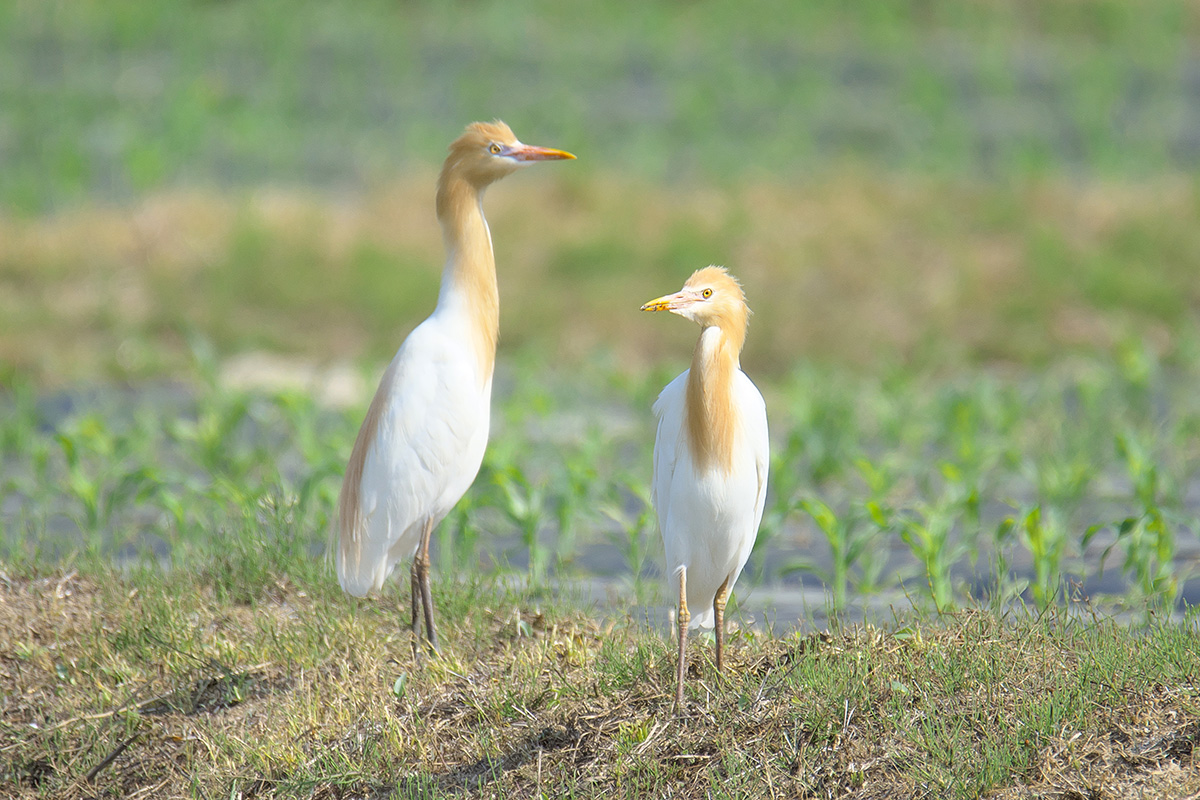
| 種目 | アマサギ (猩々鷺、黄毛鷺) | 分類 |
ペリカン目 サギ科 アマサギ属 |
学名 | Bubulucus ibis | 英名 | Cattle Egret |
|---|---|---|---|---|---|---|---|
|
アマサギ (猩々鷺、黄毛鷺) |
ペリカン目 サギ科 アマサギ属 |
Bubulucus ibis | Cattle Egret |
宗像市でみられる場所・時期
宗像では夏鳥。4月下旬から10月ころまで,宗像市内全域の水田,河川,湿地,湖沼などで見ることができる。
特徴
全長50㎝。雌雄同色。
夏羽になると頭から胸にかけて,背中がオレンジ色になる。
冬羽になるとほぼ全身白い羽に換わる。嘴は一年中黄色である。シラサギ類ではもっとも小さく,かわいらしい体型をしている。
冬羽になると他のサギ類との判別がやや難しくなるが,夏羽はオレンジ色が明瞭で見間違うことはない。他のサギと異なり,集団で行動することが多く,遠目にもオレンジ色のサギが群れているとアマサギとする分かる。
習性
農耕地や河川敷などで,カエルやバッタなどを捕食する。他のサギ類とともに集団で営巣(コロニー)する。現在,宗像ではコロニーはみられず,周辺地域から飛来するものが春から秋にかけてみられる。
分布
南方系のサギ類で,温帯から熱帯にかけて世界中に分布している。日本では本州以南に夏鳥として飛来する。
その他
田起しの最中など,トラクターの後について餌をあさる姿がよく見られる。
南方では,水牛や牛との共生関係がよく知られている。日本では,西表島などでその実例を見ることができる。
 はじめに
はじめに お問い合わせ
お問い合わせ